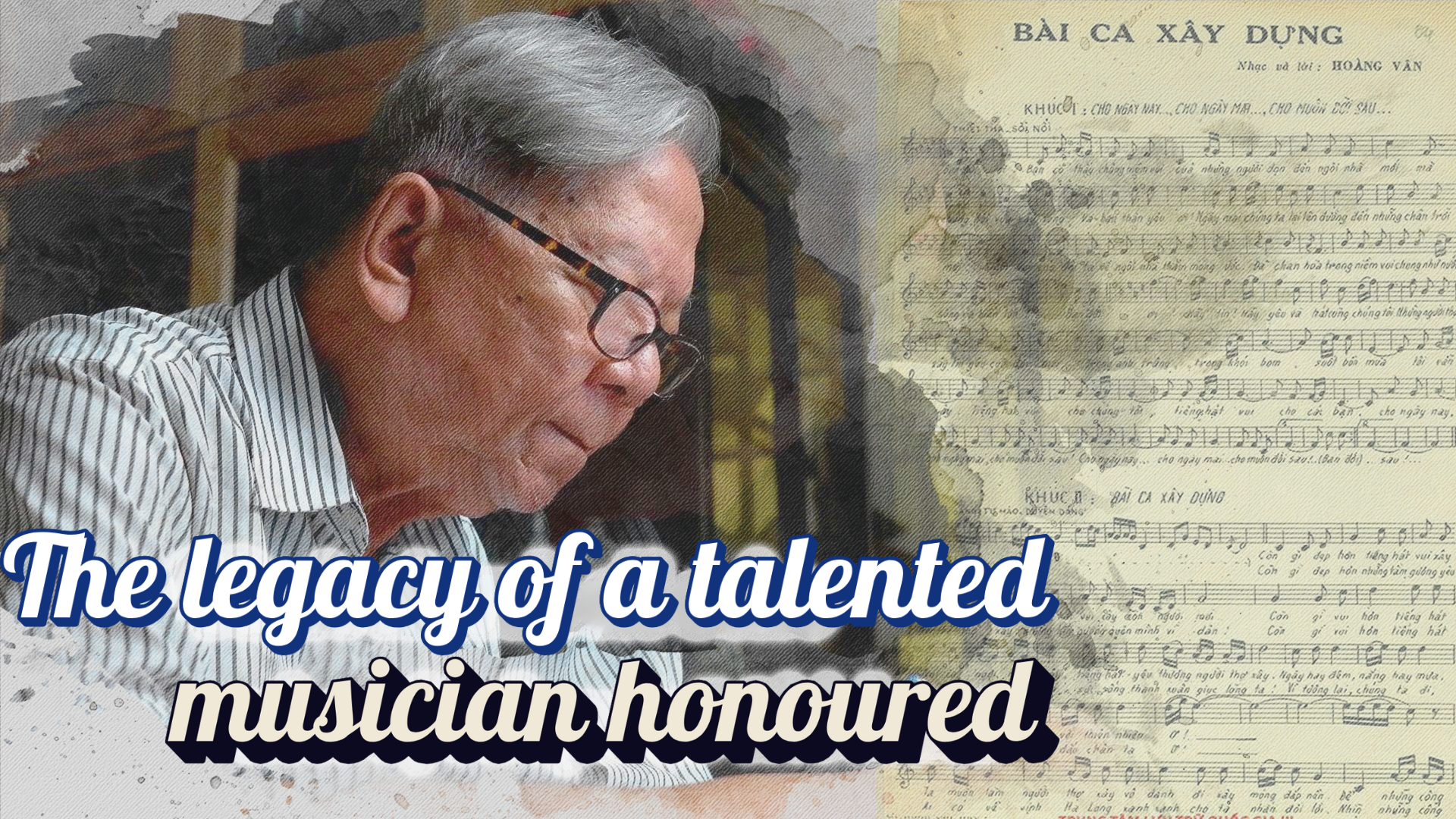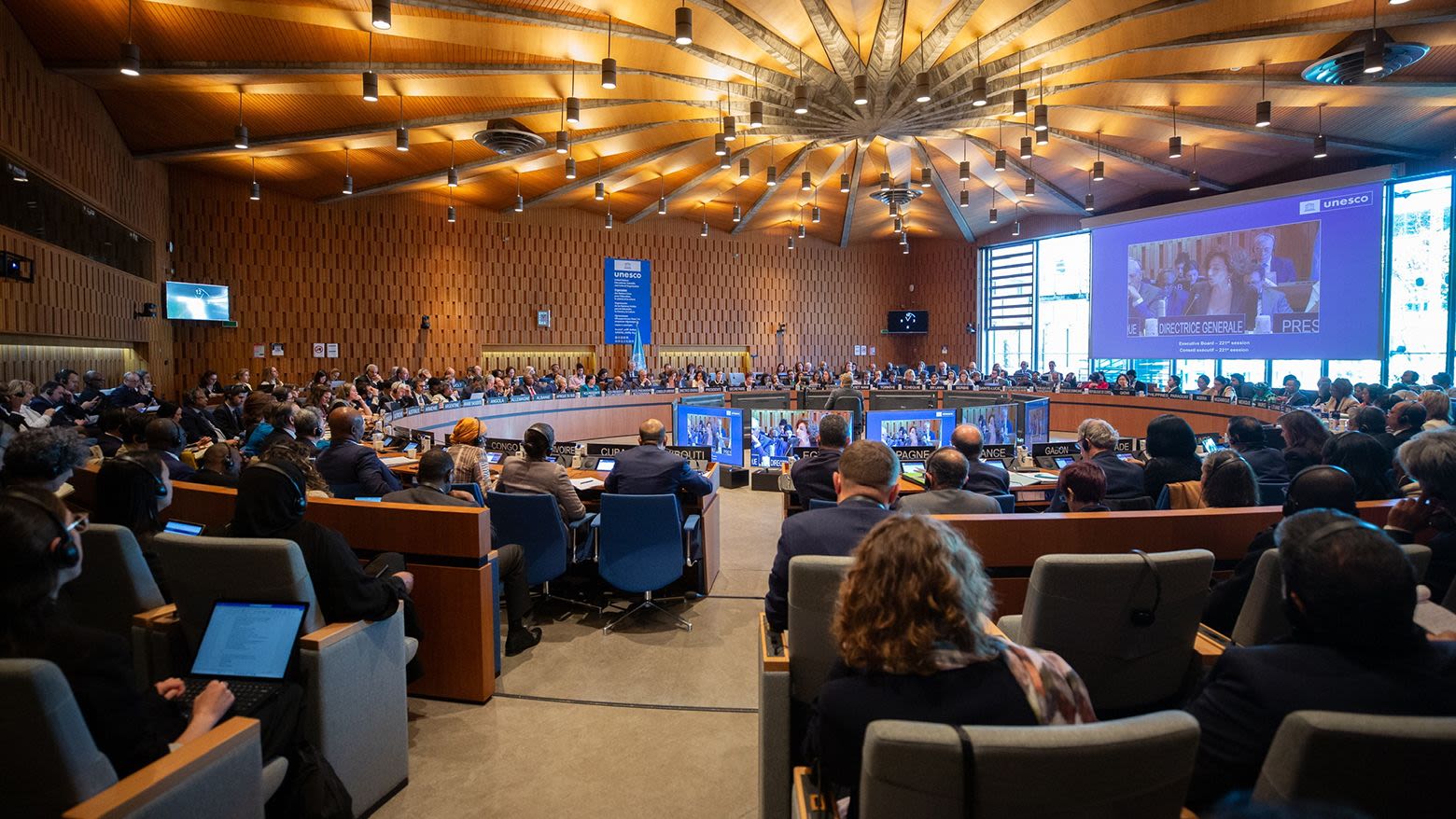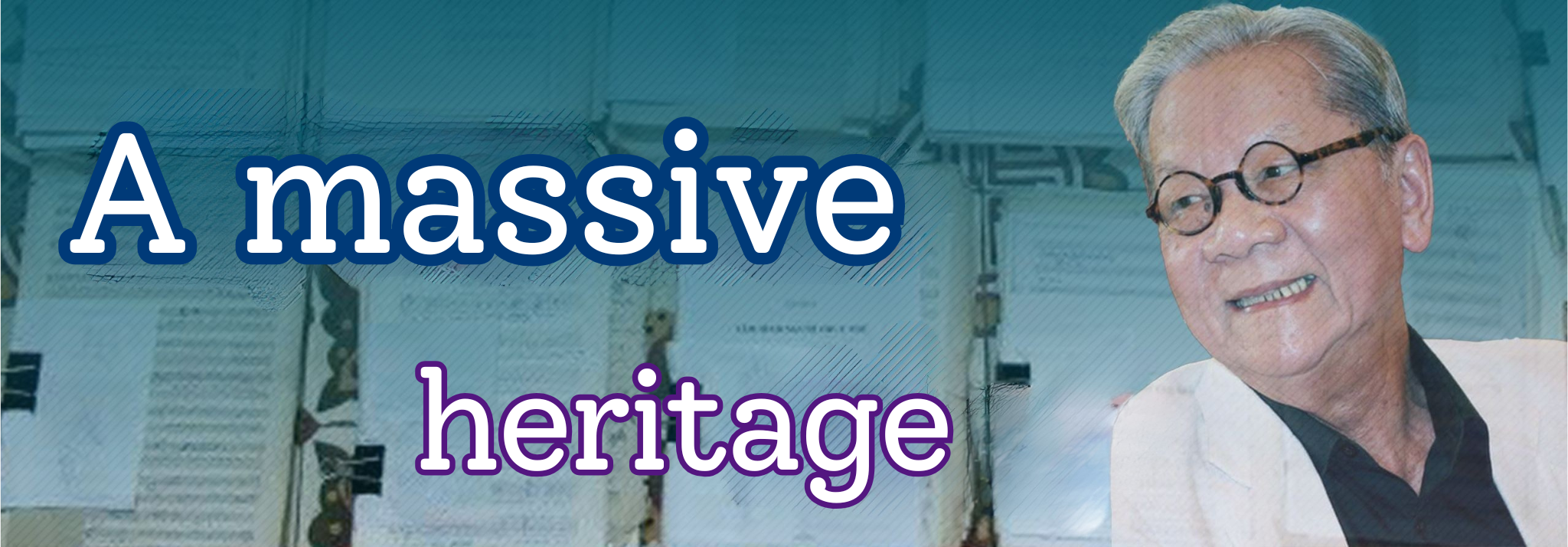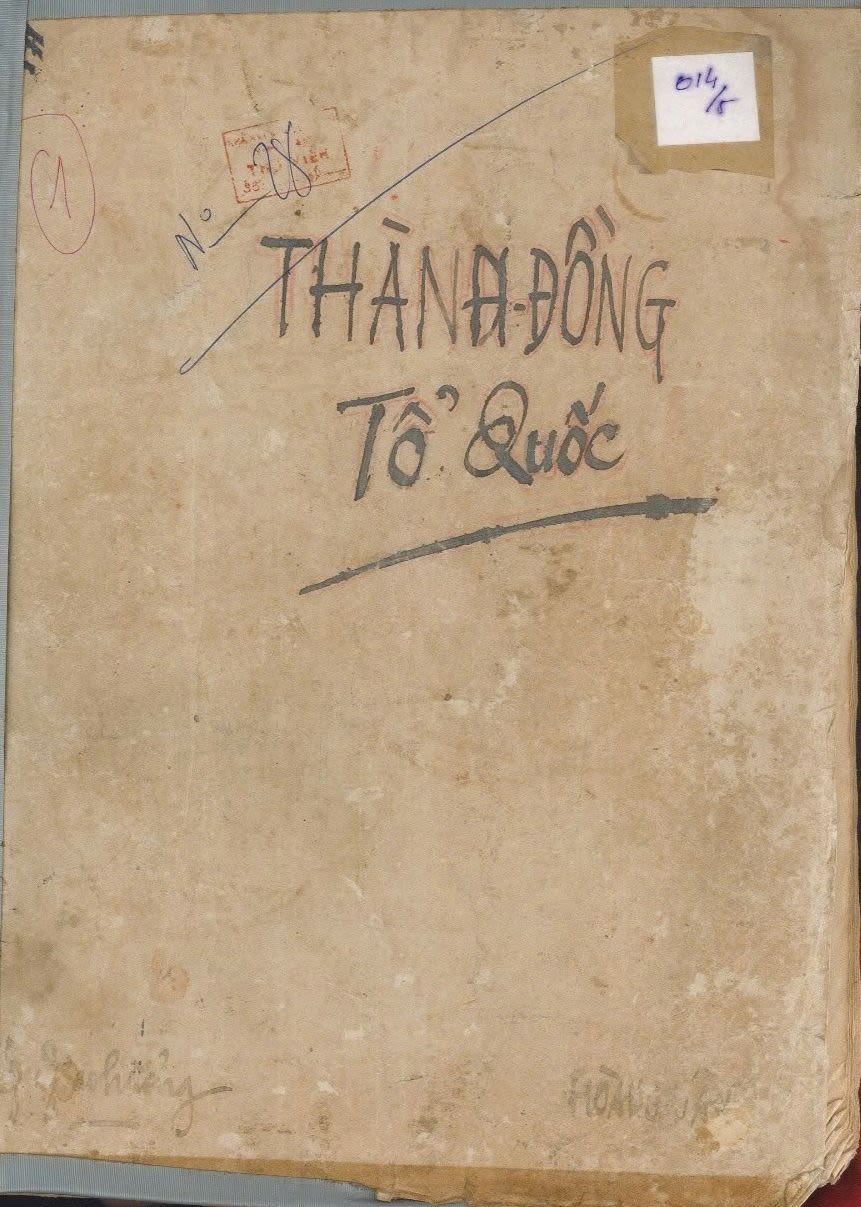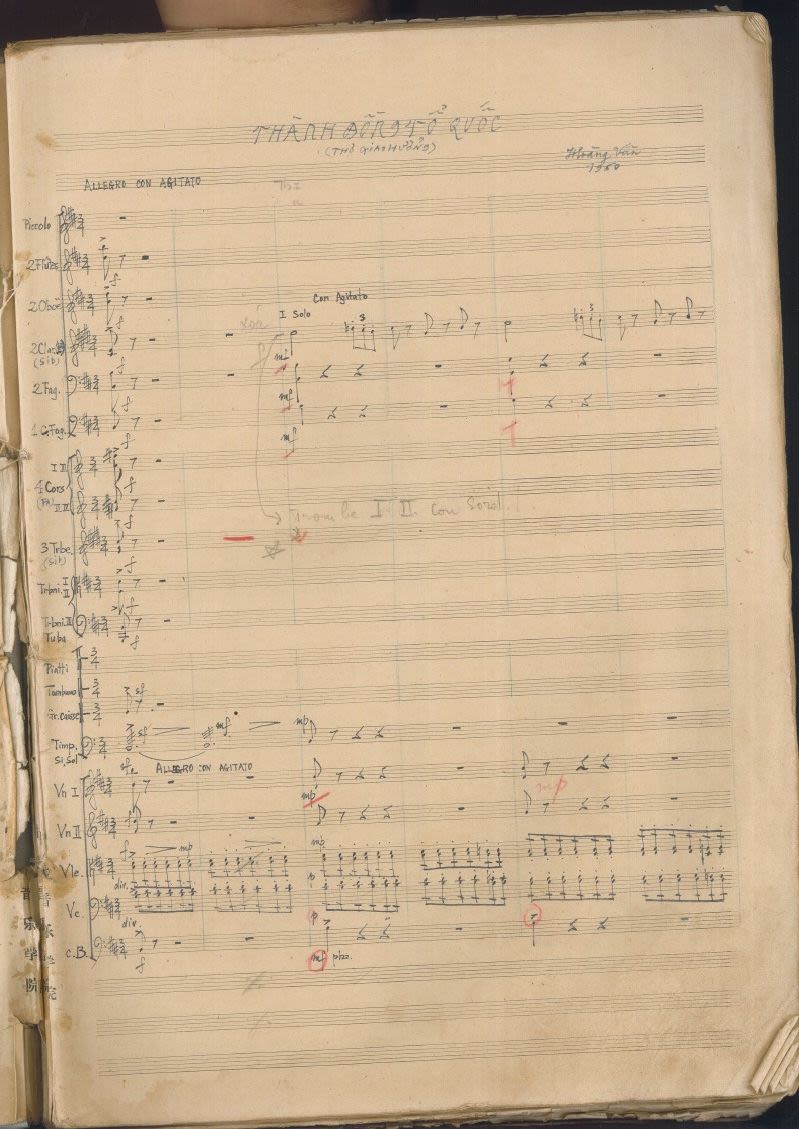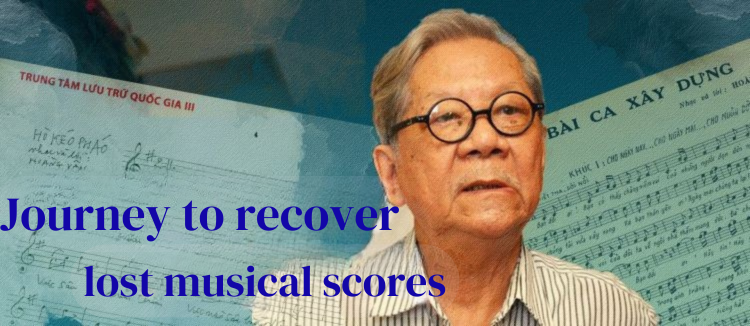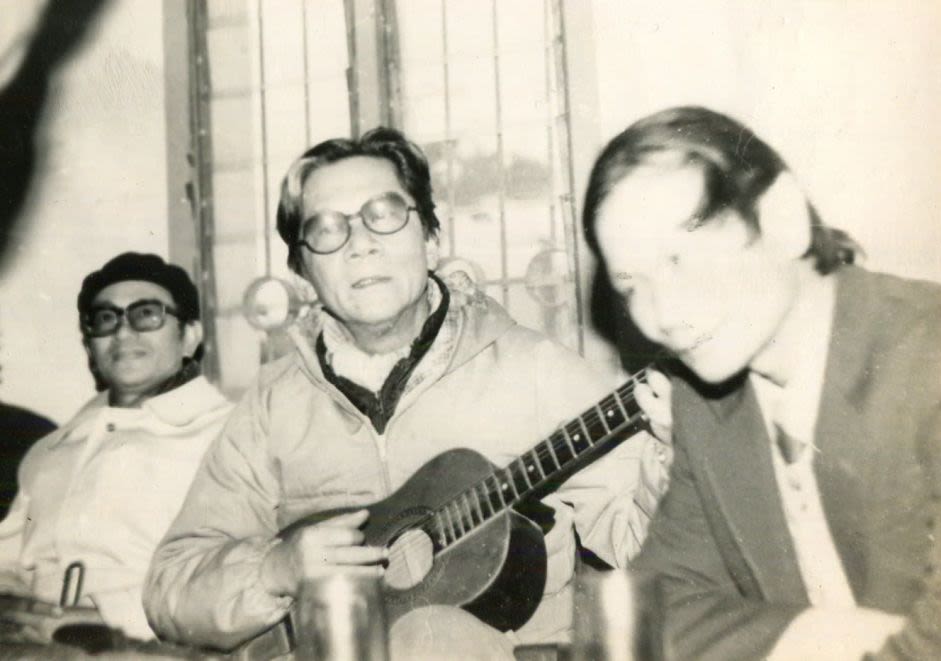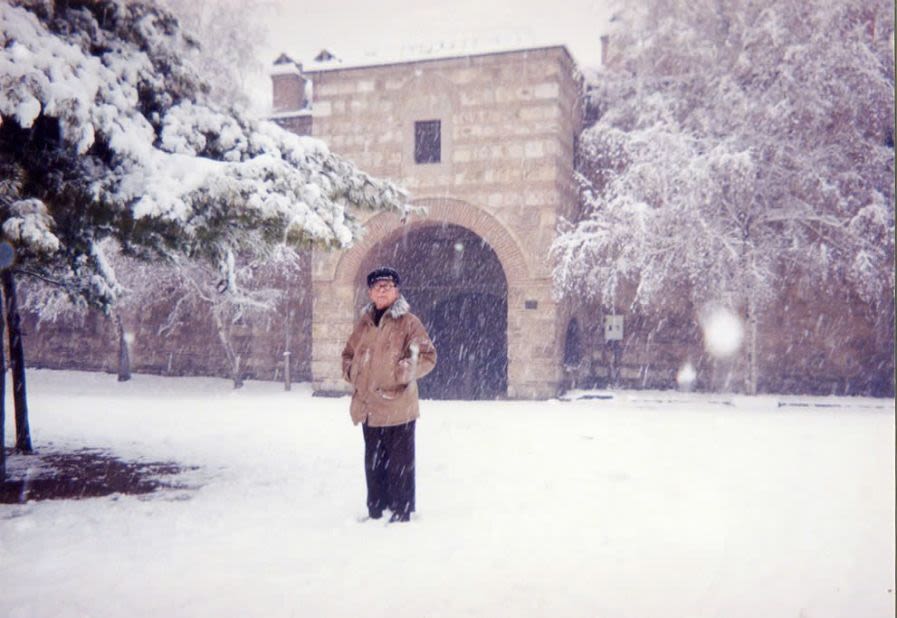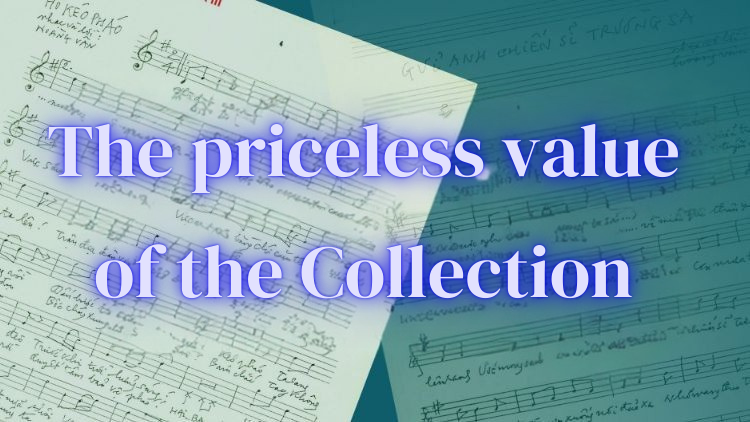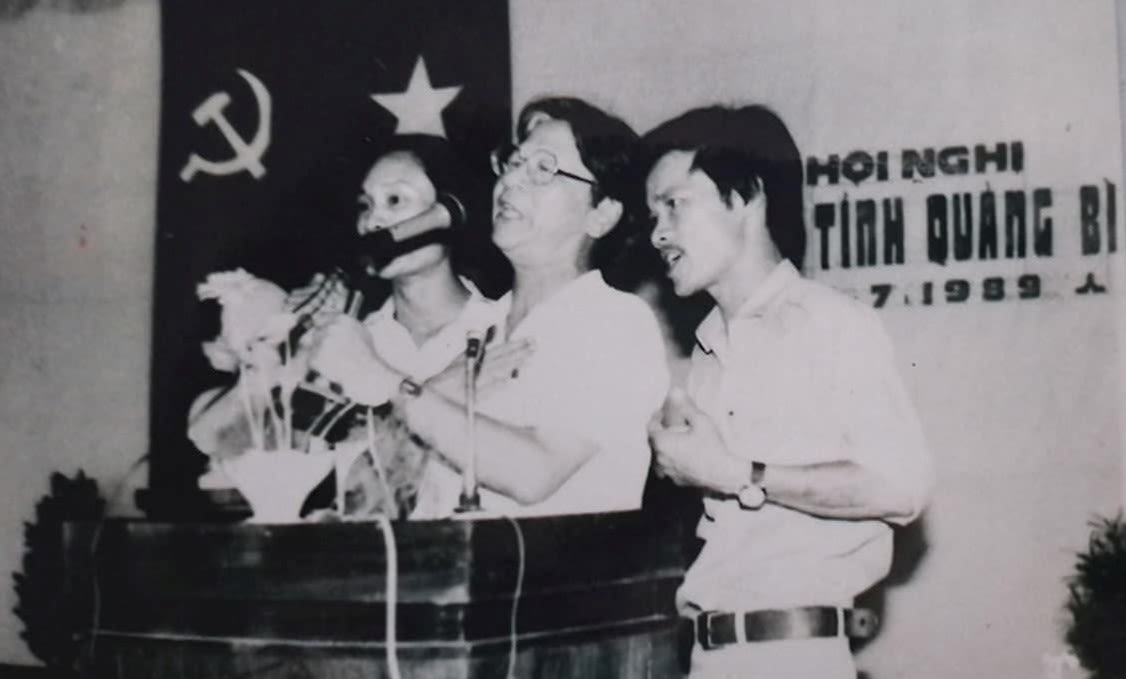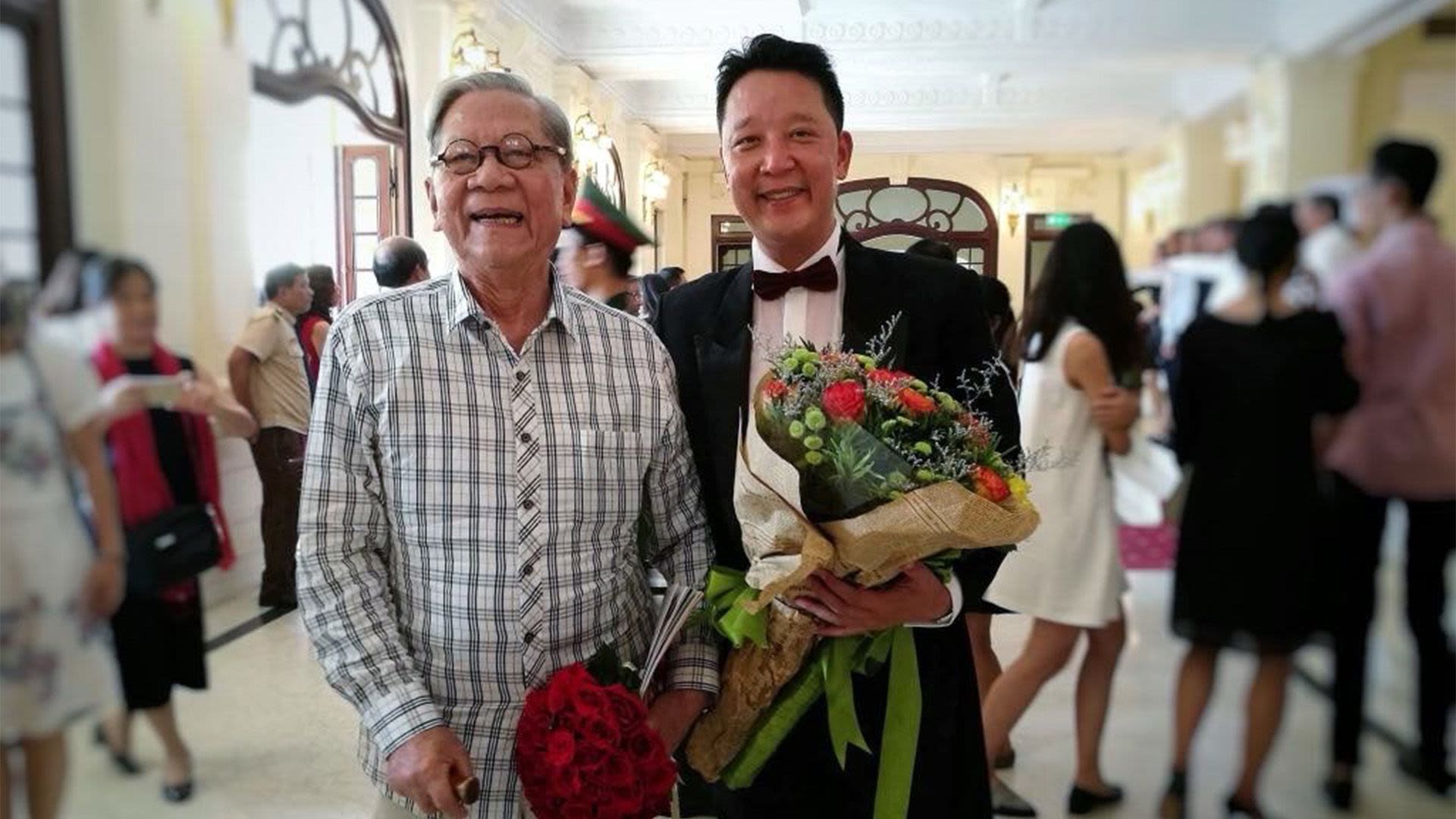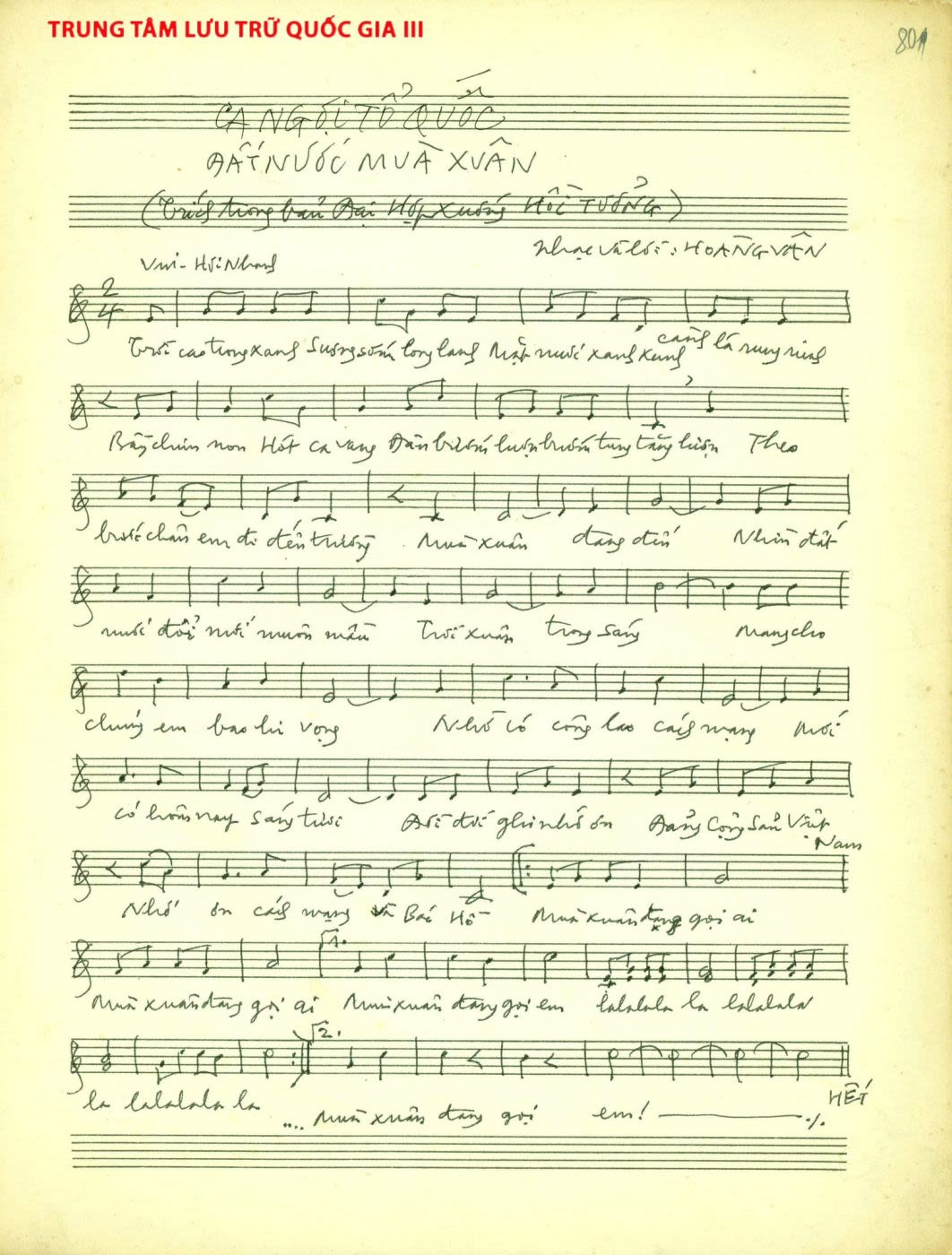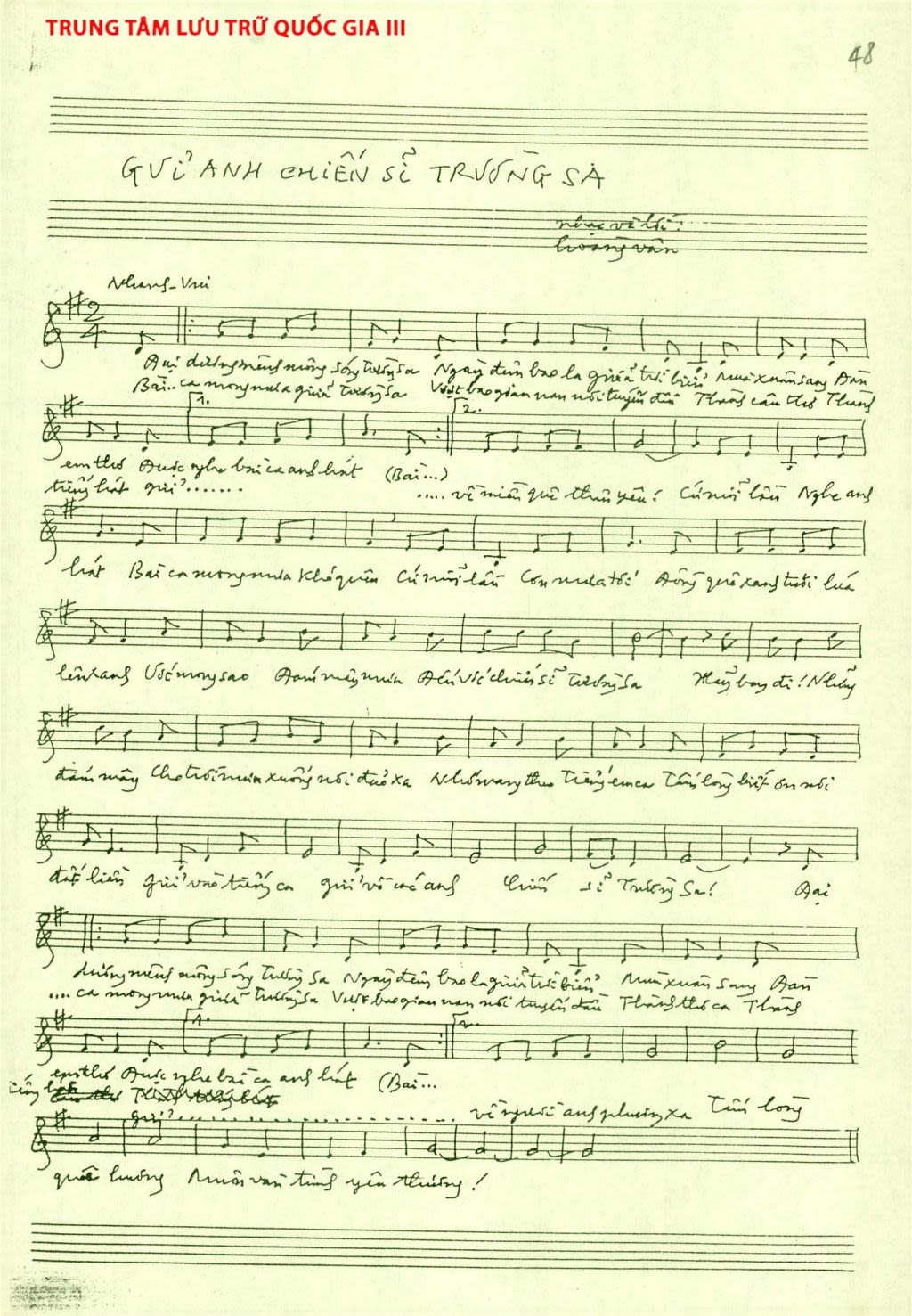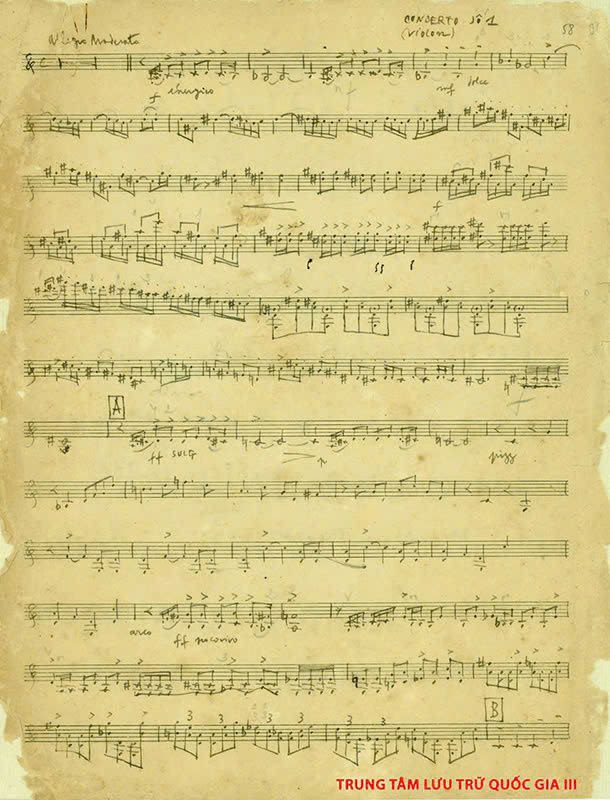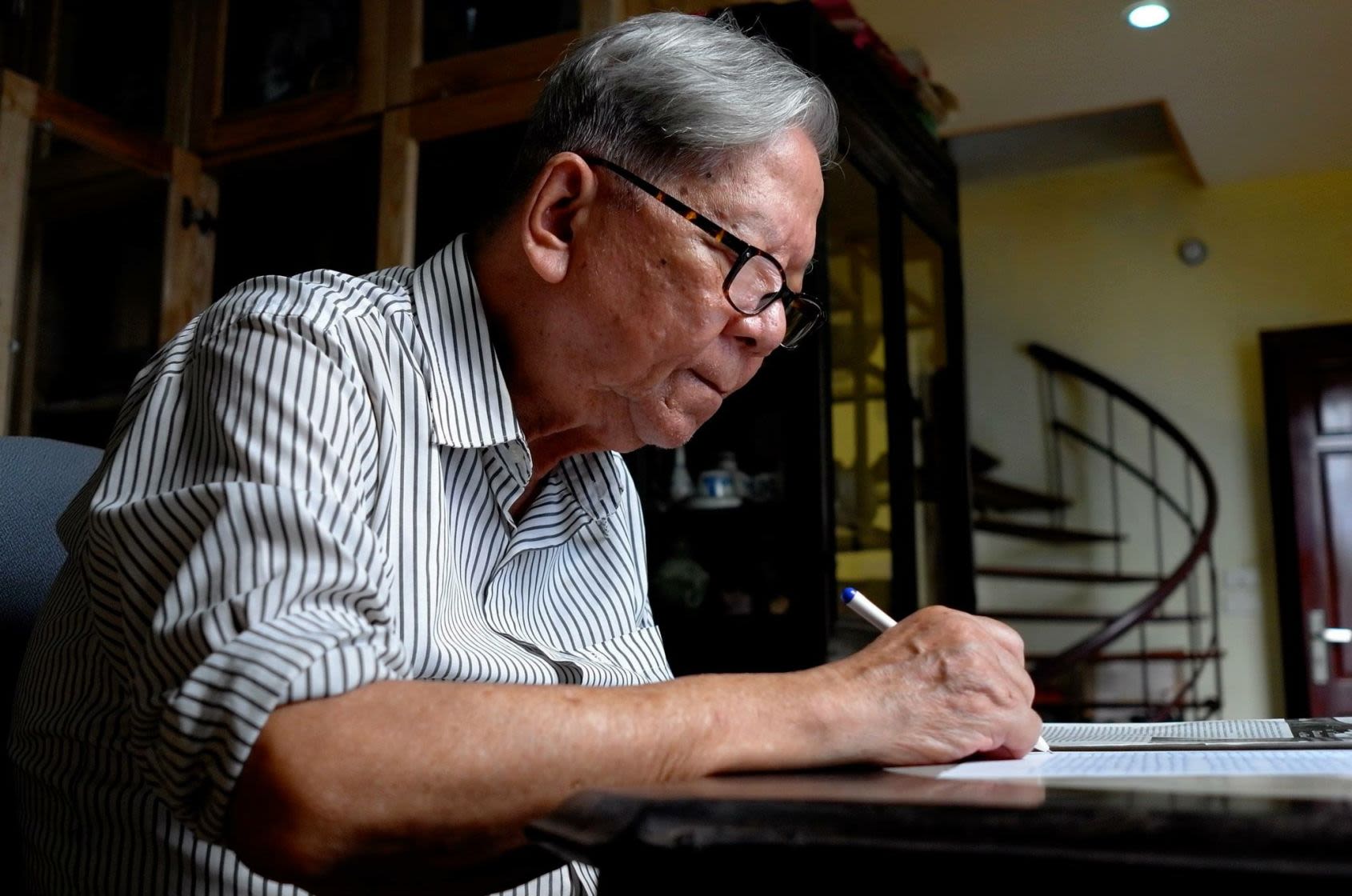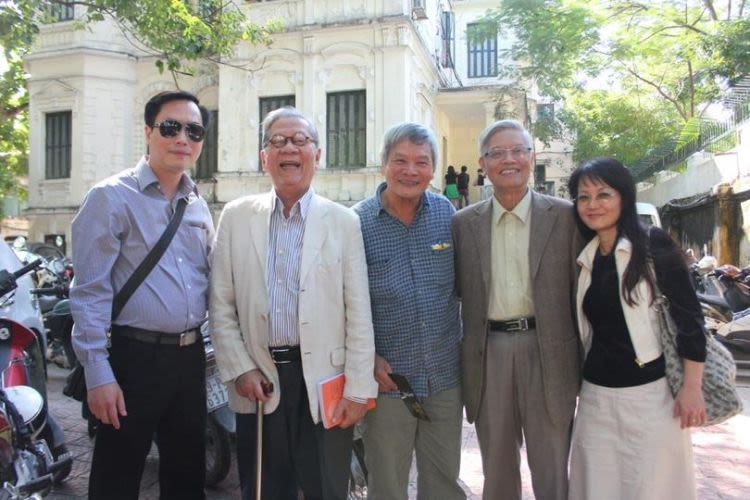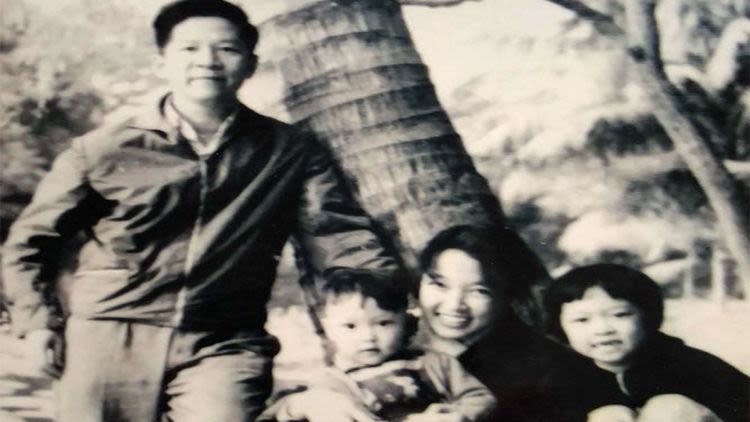“Musician Hoang Van’s Collection” has become Vietnam’s first musical work recognised as part of the Memory of the World Register and the only one in the region to date. The official inscription of Hoang Van’s collection into UNESCO’s Memory of the World Register aims to honourthe massive legacy of musician Hoang Van, with more than 700 musical works, preserved in many different forms.
The meeting of the UNESCO Executive Board, where the Collection of Musician Hoang Van was recognised.
The meeting of the UNESCO Executive Board, where the Collection of Musician Hoang Van was recognised.
At 11 pm on April 10 (4 am on April 11, Vietnam time) in Paris, France, the UNESCO Executive Board unanimously agreed to include “Musician Hoang Van’s Collection” of Vietnam into UNESCO’s Memory of the World Register. This is the first time a collection of music by a Vietnamese individual has been recognised as UNESCO’s Memory of the World Register. The collection is one of 74 dossiers recommended by UNESCO for inclusion out of 121 nomination dossiers considered during this session.
The collection of Musician Hoang Van is relatively complete and intact, including more than 700 musical works from 1951 to 2010, preserved in many different materials, including manuscripts, scores, compositions, films, photos, audio files, prints, tapes, discs, and digital files. The collection is a source of reference materials for cultural and social research in the post-colonial context. It makes an important contribution to studying Vietnamese and world music history. Currently, the Collection is preserved at the National Archives Centre III, and the multilingual website (https://hoangvan.org) allows the public and scholars to easily access it.
This is a collection formed over more than half a century.
The collection began in the 2000s with about 100 recordings from Radio - the Voice of Vietnam (VOV). These are the songs that have been recorded and stored at VOV. These recordings are also the basis for restoring many scores. As conductor Le Phi Phi, son of musician Hoang Van, said, currently, to have songs and scores to serve the performance needs, conductor Le Phi Phi also had to re-record many works from these audio files.
|
Some typical works:
Typical songs: Song of the People’s Teacher, Song of Transport, the White-ringed Bird, Cannon Call, I am a miner, Ha Noi - Hue - Sai Gon, Sailors’ feelings, Our home-Quang Binh, Tay Nguyen love song, Love for Hanoi.
Epic, choral and grand choral: Reminiscence, Crossing the Mountain, Long Live Vietnam, and Memories in the Homeland.
Symphony: Symphony No. 1 The Citadel of the Fatherland, Works for Orchestra and Choir Dien Bien Phu, 4 chapters, Symphony No.2, 4 chapters (unpublished), Symphony No.3 (unpublished) and Symphony No.4 Synfonia Lyrica (unpublished).
Soundtrack: Windy song, the White-ringed Bird, Latitude No.17 Days and Nights, White Smoke, the Little Girl of Hanoi and First Love. |
|---|
Since the passing of composer Hoang Van in 2018, his two children—conductor Le Phi Phi and musicologist Dr Le Y Linh—have worked together to collect, catalogue, systematise, and restore his musical materials, gradually forming a personal archive that they later nominated for the UNESCO Memory of the World Programme.
In fact, according to Dr Le Y Linh, the journey began as early as 2000, when there was a real risk that Hoang Van’s compositions might be lost, scattered, or destroyed due to subjective and objective factors.
In 1960, after six years of formal study in composition and symphonic conducting at the Central Conservatory of Music in Beijing, Hoang Van returned to Hanoi alongside the first generation of Vietnamese musicians trained abroad, bringing new symphonic works. That same year, he began his career at the Voice of Vietnam (then known as Vietnam Radio) as one of the station’s first conductors and artistic directors.
He left the radio in the early 1970s and worked at the Vietnam Musicians’ Association until the 1990s. His most well-known works were composed during that decade, a crucial formative period for Vietnam’s professional contemporary music scene.
The manuscripts, scores, and sheet music from that time were stored in the station’s library after recording. However, they not only faced threats from harsh weather conditions and war, but many were also destroyed in a fire that broke out in the radio’s orchestral archive around 1969–1970.
Following the end of the war in 1975, Vietnam’s music landscape experienced significant upheavals, especially during the restructuring of numerous cultural institutions in the country’s transition to a market economy in the 1990s.
In addition, soloists and conductors often failed to return the scores after performances or recordings. As a result, manuscripts and orchestral materials by various composers became scattered across theatres and orchestras, libraries and storerooms, within agencies that had merged, split, or undergone functional changes. As for the recordings, older equipment could not keep up with rapid technological advances. Many of these audio materials became unplayable due to a lack of technological updating, particularly digital conversion.
In December 1994, while preparing for the "Hoang Van’s Concert" in Paris, the composer had to hand-copy several pieces for the performers to use. Then, in August 2000, composer Hoang Luong had to listen to a 1976 recording and transcribe “Reminiscence”—a grand composition by Hoang Van for orchestra and double chorus—since the sheet music and parts may have been lost in the archive fire and/or had gone missing. This is also the sheet music used ever since.
Recognising the obstacles to preserving works composed during this crucial period of Vietnamese music, the family of composer Hoang Van decided to collect all of his works, from manuscripts, full scores, and recordings, to documents, materials, and images related to the composer.
Composer Hoang Van embarks on a snowy winter trip to North Macedonia during the 1990s–2000s.
Composer Hoang Van embarks on a snowy winter trip to North Macedonia during the 1990s–2000s.
Dr Le Y Linh recounted: “To collect the materials, I opened each carton box, turned each yellowed, folded page tucked inside a book, made phone calls, sent messages, wrote letters to institutions and fans, and requested everything from his autobiographical notes to interviews conducted by journalists. I transcribed stories and memories shared by family members, colleagues, reporters, and friends of the composer; gathered articles, printed books, tapes, discs, and digital files from libraries and archives and recorded interviews and discussions.”
She also shared that her younger brother, conductor Le Phi Phi, was responsible for proofreading, comparing manuscripts, digitising them, and reconstructing compositions through recorded performances.
“Above all, I must express my deep gratitude to the friends, acquaintances, and music lovers of his – to the websites and music enthusiast groups, including many young people… Quietly, day by day, month by month, some collectors gave me the only printed copy they had. Some gifted us scores, manuscripts, and books they had preserved for more than half a century, or sent us sound files that we thought were lost forever… all so the Collection could become a treasure of today. And we continue to search, restore, and enhance the value of this Collection for the future,” said Dr Le Y Linh.
According to the evaluation of the International Advisory Committee of UNESCO’s Memory of the World Programme, Vietnam’s submission fully meets international criteria with outstanding value. The collection is well-preserved and highly accessible through a multilingual digital platform (https://hoangvan.org), contributing to disseminating Vietnamese cultural values to the international community.
The Committee also noted that the Collection not only includes valuable works bearing the imprint of composer Hoang Van, but also reflects one of the turning points in the history of Vietnamese music, the country’s transformations, and the Vietnamese people’s spiritual life over many eras. With a harmonious blend of European classical and traditional Vietnamese music, his works are artistically significant, serving as invaluable materials for studying Vietnamese cultural, social, and musical history.
The Collection also plays an important role in music history and cultural research. It is a valuable scientific resource, offering essential information about a key period in the formation and development of contemporary Vietnamese music, as well as Vietnamese society.
Composer Hoang Van singing with his colleagues at a conference in 1989. (Archive photo)
Composer Hoang Van singing with his colleagues at a conference in 1989. (Archive photo)
Beyond its national significance, the Collection holds international relevance. With its academic musical language, artists worldwide can easily access and perform the works of composer Hoang Van. This enables global classical music audiences to explore a culturally rich and distinctive Vietnamese musical heritage of high artistic value, enriching the global classical repertoire.
The advisory council has also recognised the Collection as a model for preserving and promoting the documentary heritage of an artist’s family. Most of the manuscripts and full scores have been well preserved. The Collection comprises approximately 200 audio recordings (totalling over 20 hours), including many original studio versions performed by prominent Vietnamese vocalists when the works were created.
With its diverse materials—ranging from handwritten full scores and printed editions to audio recordings and extensive video footage—the Collection caters to the needs of various music communities engaged in performance, education, and research.
The Collection holds profound cultural and societal values, playing a crucial role in bridging academic art and the wider public. Hoang Van’s works possess a distinctive vitality. Widely praised by professionals, his compositions have become standard teaching material at conservatories and other professional music institutions. His works continue to engage the public through their frequent inclusion in national and international music competitions, as well as in amateur music movements.
Dr Vu Thi Minh Huong, Vice President of MOWCAP and expert on the International Advisory Committee for the Memory of the World Programme, noted that this nomination represents a unique form of heritage never previously submitted by Vietnam: a personal archival collection of a composer, collected and preserved by his family rather than managed by a state institution, and one that harnesses digital technology to ensure broad public access.
Composer Hoang Van and his son, conductor Le Phi Phi. (Photo courtesy of composer’s family)
Composer Hoang Van and his son, conductor Le Phi Phi. (Photo courtesy of composer’s family)
Furthermore, the dossier’s content is exceptionally rich and distinctive, demonstrating international significance and broad influence. It shows considerable professional depth and extensive outreach—locally, regionally, and globally. The collection resonates with communities within and beyond Vietnam, helping to promote the nation’s traditional musical heritage to a wider international audience.
According to Dr. Vu Thi Minh Huong, Vice President of MOWCAP and expert of the International Advisory Committee of the Memory of the World Programme: “The inscription of the Hoang Van Musician Collection will be a wake-up call for the preservation of musical documents not only in Vietnam but also across the region and the world.
This contributes to raising public awareness about preserving materials that enrich the memory of the nation and the world, stemming from individuals, families... as well as artists, musicians, painters, writers, poets... This is one of the goals of UNESCO’s Memory of the World Programme.”
The Department of Cultural Heritage evaluates that the nomination of musician Hoang Van’s archival document collection for inscription into the Memory of the World Register is not only a significant milestone in the work of preserving privately owned documentary heritage (in the field of music) but also affirms the practicality and effectiveness of the 2024 Law on Cultural Heritage. It serves as motivation for protecting and promoting the value of such heritage, contributing to affirming the status of Vietnamese cultural heritage on the regional and global map.
This inscription also raises the total number of documentary heritages of Vietnam recognised by UNESCO to 11, including four in the Memory of the World Register and seven in the Asia-Pacific Regional Register, further enriching the treasure trove of humanity’s heritage.
|
Musician Hoang Van, whose real name was Le Van Ngo, was born on July 24, 1930, in Hanoi into a Confucian family on Hang Thung Street, with both his father and grandfather being Confucian scholars. In 1946, when the national resistance war broke out, he left Hanoi to join the revolution, taking part in the Mai Hac De Youth Salvation Team and serving as a liaison for the Dong Kinh Nghia Thuc self-defence force (Interzone I) in Hanoi. During this time, he composed “Tin chien thang” (News of Victory) and “Chien thang Tay Bac” (Victory in the Northwest) in 1951, and “Ho keo phao” (Song of the Artillerymen) in 1953, the latter tied to the Dien Bien Phu victory and winner of the first national performing arts festival in 1954, officially launching his composing career. He studied at the Central Conservatory of Music in Beijing, China, from 1954 to 1960. He graduated from the University of Music there with the symphonic poem “Thanh dong To quoc”(The Fatherland’s Iron Bulwark), then worked at the Voice of Vietnam as an art director and conductor of the station’s music ensemble, helping establish its orchestra. He served as a member of the Executive Committee of the Vietnam Musicians’ Association (from 1963) and taught at the Vietnam School of Music (now the Vietnam National Academy of Music) from 1961 to 1983. In 2000, he was awarded the Ho Chi Minh Awards and State Awards for Literature and Arts. He passed away in 2018. |
|---|
Published: April 25, 2025
Content: Tuyet Loan
Translation: NDO
Design: Duy Long, NDO
Photo: Archives, family archives
